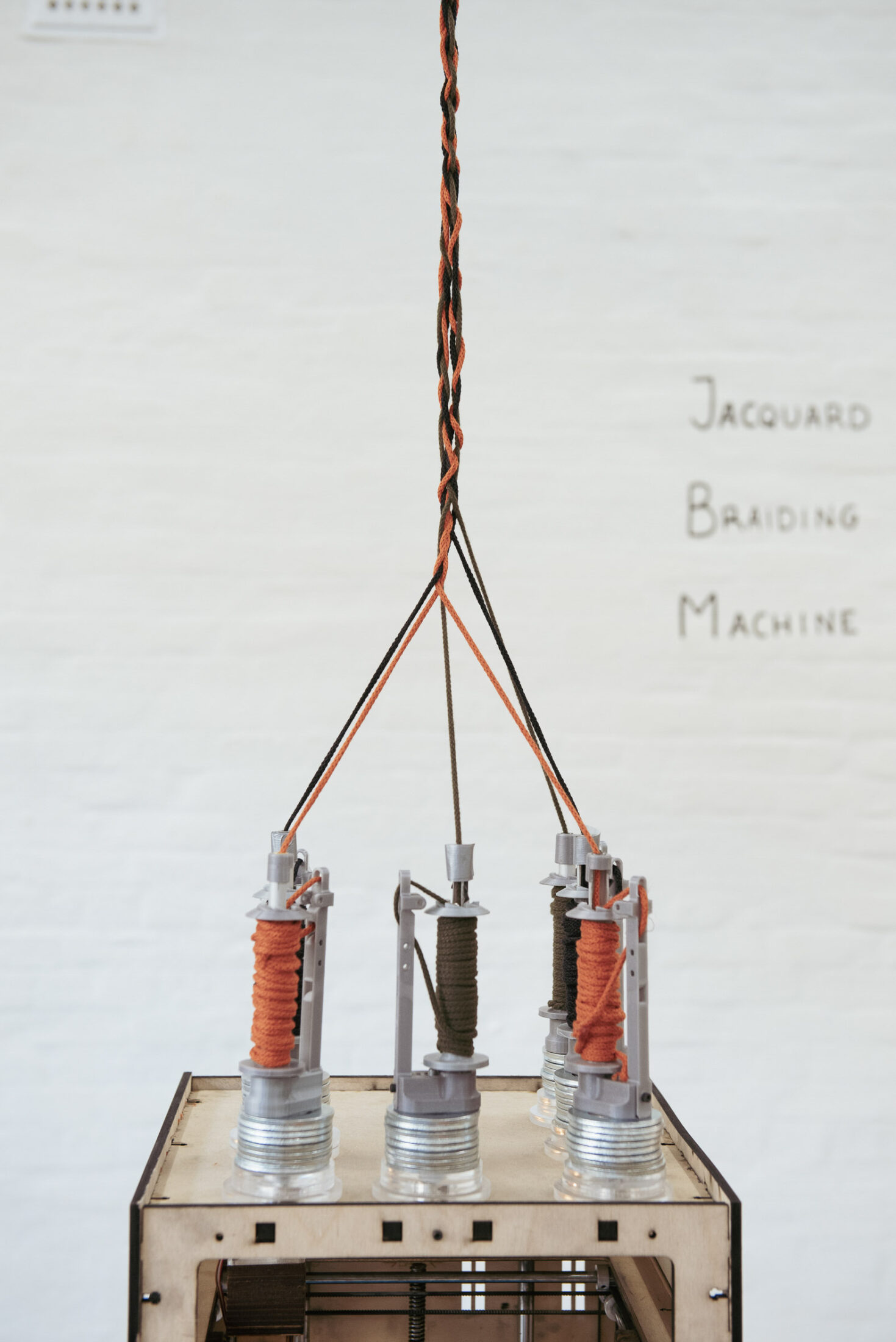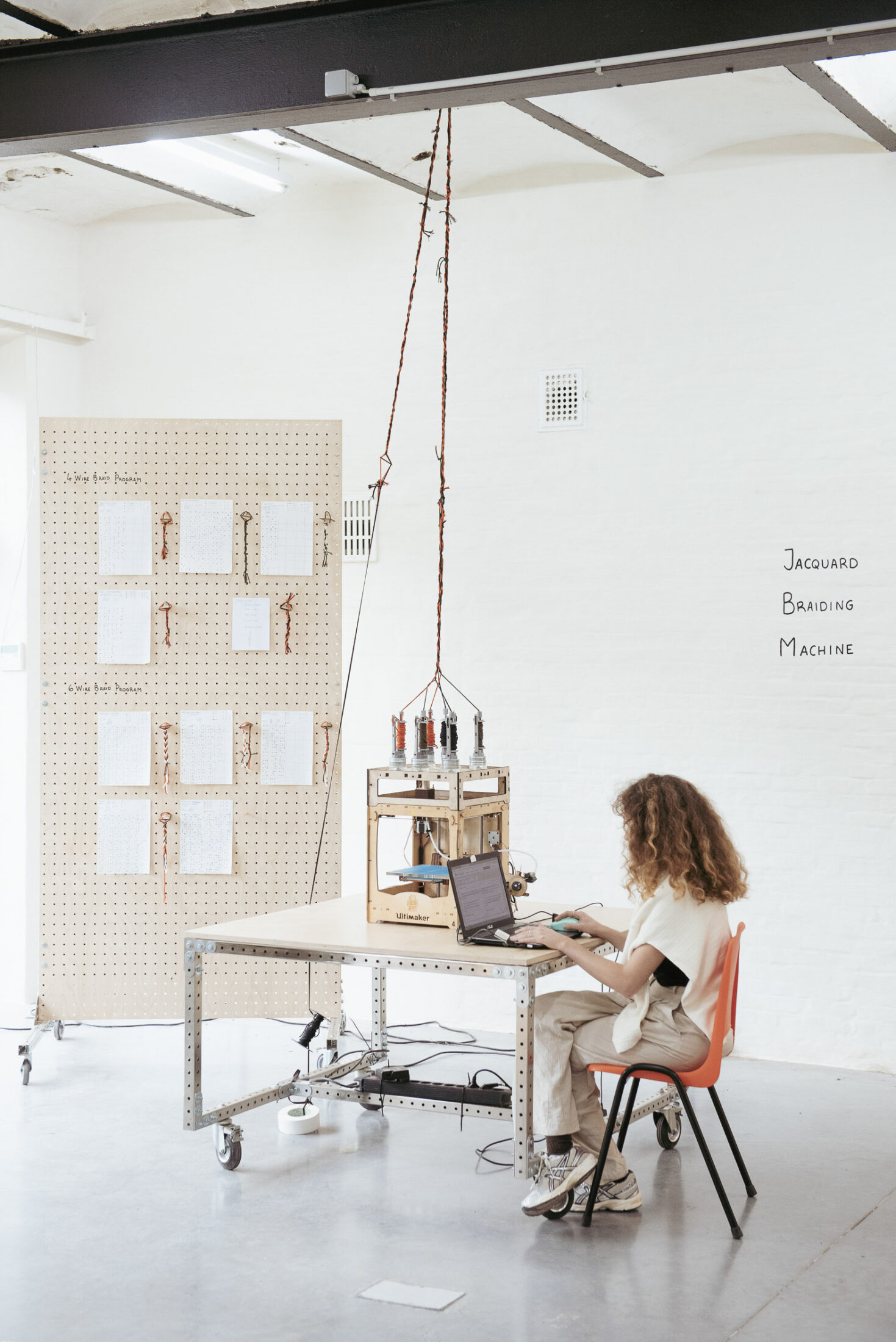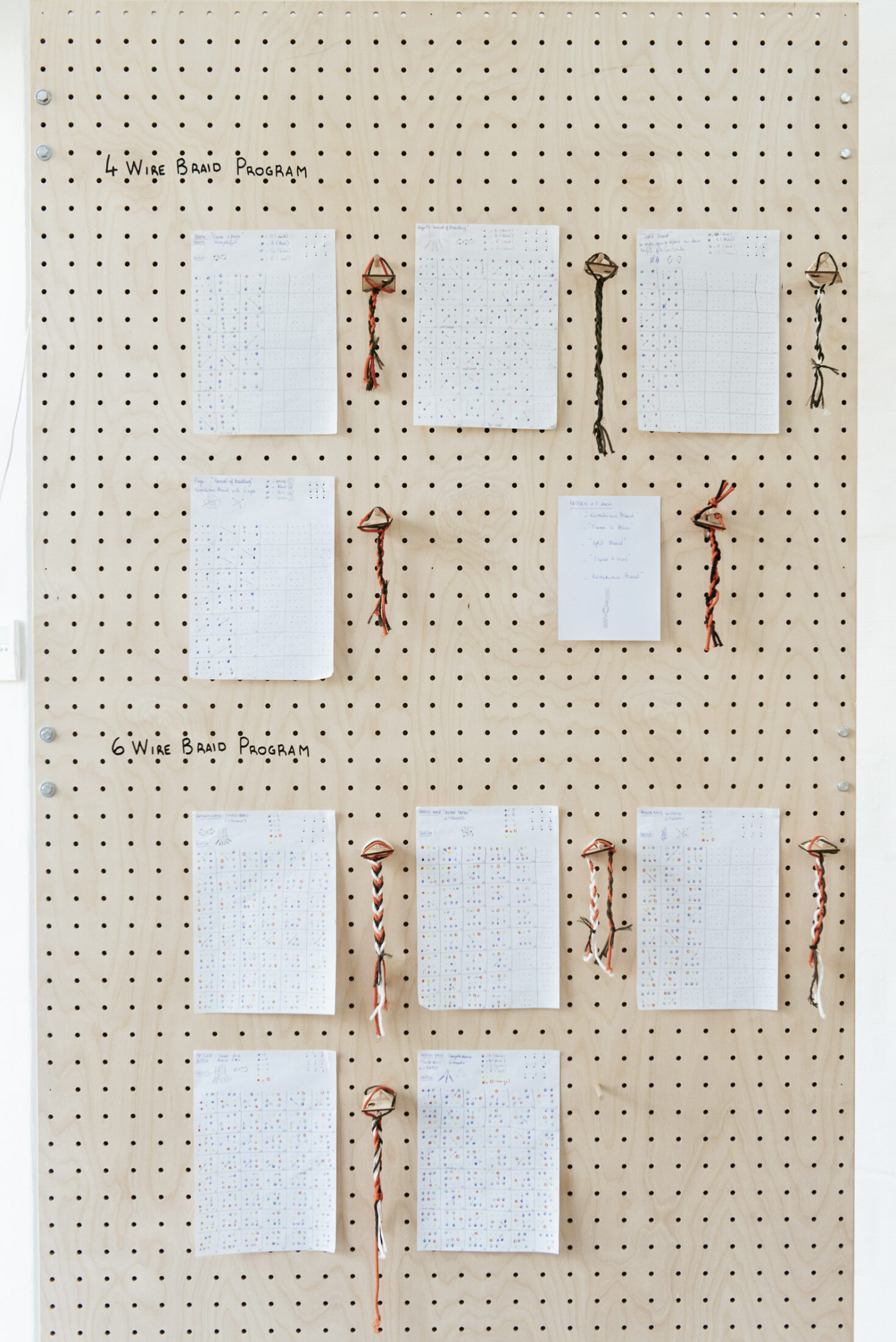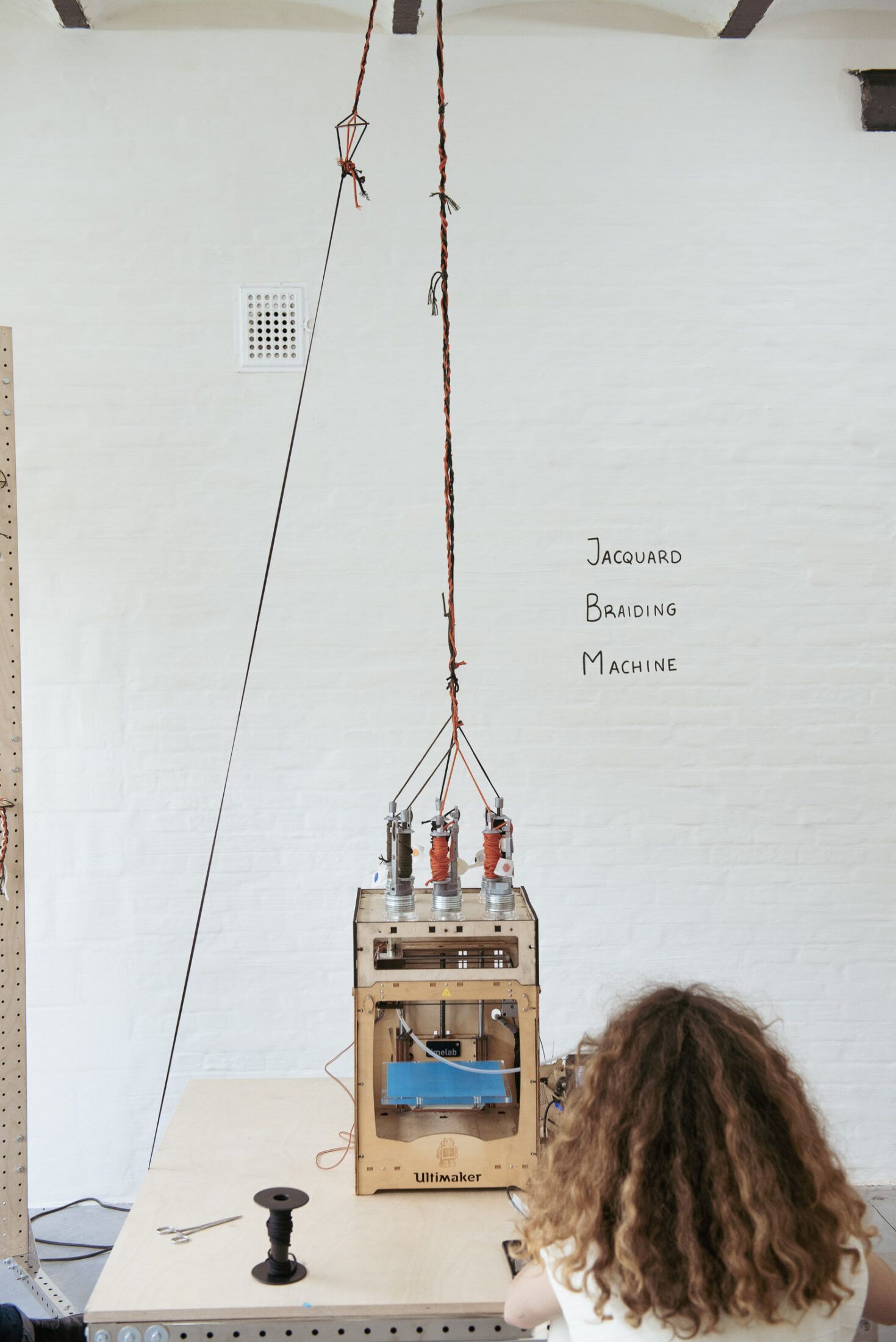Turning classic braiding into a platform for experimentation
Not only the combination of insights from different textile techniques, but also the mixture of different expertise’s during the cocreation process has led to an innovative opensource machine. The research started with the question: what if only one machine could create several braiding patterns? Considering that traditional braiding machines allow only one track for the bobbins to run: which kind of machine would allow constant reconfiguration and experimentation of the spools?
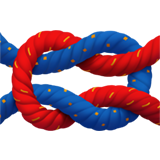
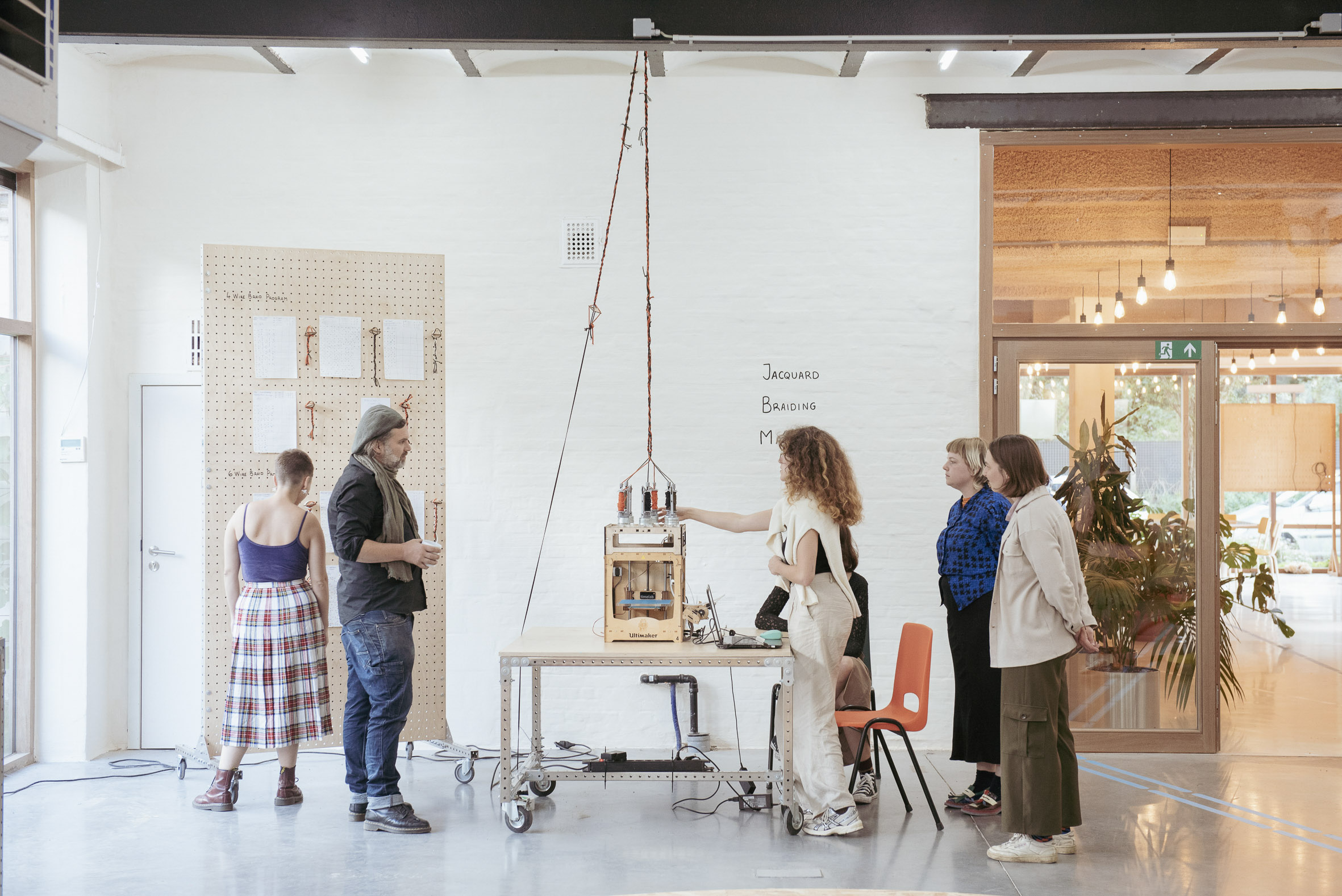
As an introduction to each other and to braiding as a technique, the participants of the Fiber Fever Summercamp at Timelab were invited to create largescale braids. Guided by different disks that were developed by Soft Connection Lab, the participants gained deeper insight into the creation of a braid and the way its patterns come to life. First, small groups of eight people literally walked the tracks. Secondly, the exercise was scaled down for two people to make the tracks with their hands.
This playful exercise inspired one of the participants, French textile designer Lou Cruard, to research if it would be possible to reconfigure the braiding tracks digitally. For the project, she teamed up with designer Jesse Howard and engineers Maximilian Ernestus and Lieven Standaert. Together, they’ve converted an out-of-use 3D-printer into a trackless braider. The machine is based on the open-source design by Fraens, an Austrian engineer.
From classic to digital
In a classic braiding machine, the braiding track is determined mechanically and fixed to a single configuration. This new version allows constant reconfiguration and experiments with the movement of the spools. In this way, it functions as a platform for experimentation. In this new version the printhead is steered in a magnetic way, and it moves the carriers – which hold a magnet in the bottom – one by one. Lou Cruard translated the classic braiding trackpads into sequences of steps, as there are much more movements to make, while there’s only one arm to move the carriers.
This research project, carried out by a multidisciplinary team, resulted in the Jacquard Braiding Machine, which is a proof-of-concept of a braiding machine that can braid any pattern, and change patterns on the fly while braiding. As each braiding + ook Jacquard? machine can normally only take one braiding technique at the time, this marks an innovative opportunity for a traditional textile technique.
Summercamp Fiber Fever 23: BRAIDED RIBBONS
We use them every day. Braided ribbons, like ropes, shoelaces or the string of your hoodie, are the most ordinary objects. However, they have multiple associations, meanings, and functions. As these objects collect historical, cultural, technical, social and systemic layers, they inspired the Fiber Fever Summercamp 2023 at Timelab. Fifteen participants with different backgrounds focused on engineering, techniques, patterns, colors, movement/meaning and circular materials. They worked in mixed groups on the multiple aspects of braiding and presented these elements as one collective outcome. Besides VUB, Design Academy Eindhoven, UGent and LUCA Genk Soft Connection Lab was one of the main partners.
